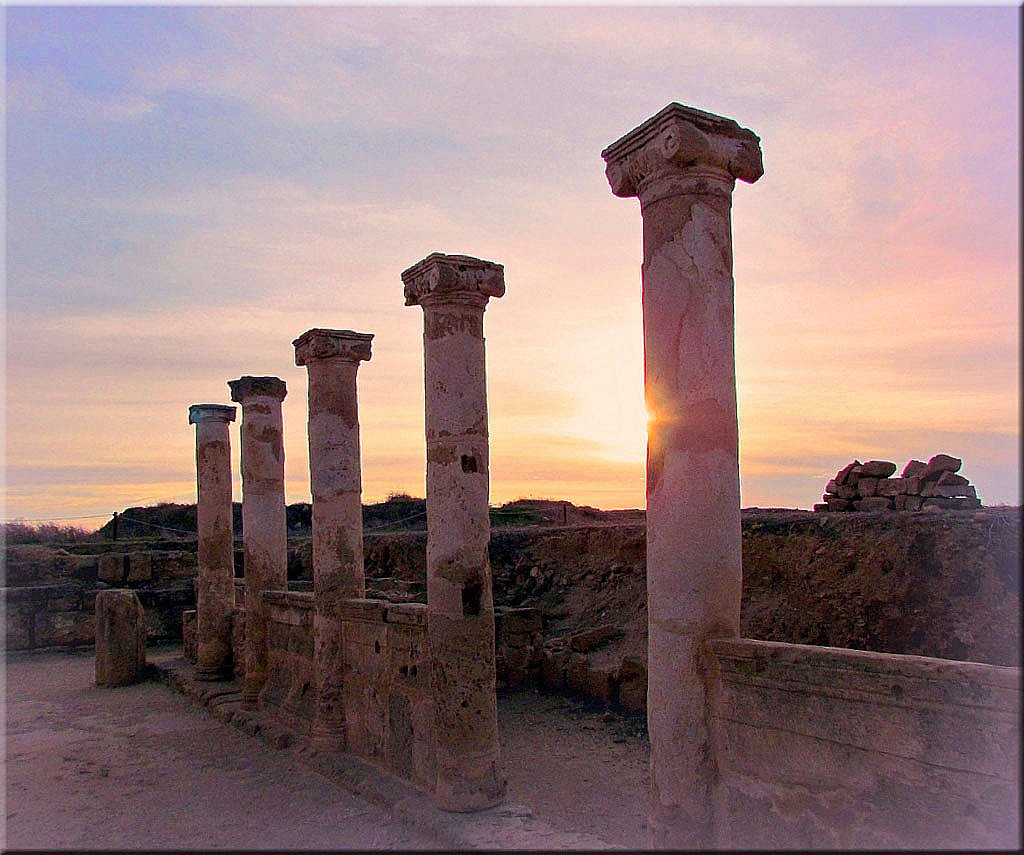Cyprus’ history has its roots in ancient times. The historical sites and monuments of Cyprus operate as open-air museums and tourist attraction for visitors and locals who want to meet the history and culture of the island.
Archaeological site of Amathus

Amathus is located in the Limassol province, in the area of Agios Tychonas and 10 kilometers east of the center of the city. Amathus is one of the most important cities – kingdoms of southern Cyprus. Historical Amathus includes the citadel, the temple of Aphrodite, the complex of the Roman market and Baths, the port, the walls, the palace, the basilicas and the necropolis. From the 5 basilicas found, the oldest is the one of Saint Tychon, the oldest Christian temple in Cyprus.
Amathus was one of the most important kingdoms of antiquity, built on the coastal hills east of Limassol. The coastal location of the kingdom was the main reason for its development, since it facilitated in the construction of the harbor and the development of trade in the region.
The city of Aphrodite and Ariadne was first settled in the 11th century BC and it was built during the Neolithic period, three centuries later. However, the city was fully developed in the Late Bronze Age, when the island became Hellenic and the Cypriot kingdoms were built according to the Mycenaean standards.
Find Ancient Amathus
Kourion – Curium ancient theater

Curium is probably the most important archaeological site of Limassol. Located in about 17 kilometers southwest of the Limassol, the site of Curium combines history and structures of various historical eras.
Curium’s ancient theater has a capacity of 3,500 spectators and a magnificent view of the Mediterranean Sea. On the left and right side of the stage there were two arched corridors and was the entrance point for the public.
Nowadays, people visiting Curium have the opportunity to gaze, apart from the impressive findings and the mosaics, the magnificent view of the sea and the sun “diving” into its waters. One of the most famous villas is Achilles’ house, with plenty of mosaic floors, dating back in the 4th century. A.D. and named after the Greek hero of mythology.
Find Ancient Curium
Neolithic settlement of Choirokitia

Choirokitia’s Neolithic settlement is located in the Larnaca and close to today’s village. It is the oldest, most well-preserved settlement dating back to the latest phase of the Neolithic period (7,000 BC).
In an attempt to make it easier for the visitors to understand the area, the Department of Antiquities created five circular buildings and part of the fortification enclosure with its entrance, perfectly replicating the Neolithic way, same methods and materials, while the original Neolithic items were placed in the buildings. The Neolithic settlement of Choirokitia has been included in the UNESCO World Heritage Sites since 1998.
Find Neolithic settlement of Choirokitia
Archaeological site Palaiokastro

A small but very important historical site, the Archaeological site Palaiokastro is found 13 kilometers northwest of Paphos, in Coral Bay. The archaeological site is located on a small peninsula 450 meters long and 150 meters wide.
The roots of Hellenism began from here, as it is where the Mycenaeans, the first ancient Greeks, colonized in 1200 BC when they immigrated to Cyprus after the fall of the Mycenaean kingdoms in Greece.
The archaeological site also houses the Maas-Palaiokastro Museum, an underground building from which only the ceiling, a bronze dome, is visible from outside.
Find Archaeological site Palaiokastro
Tamassos
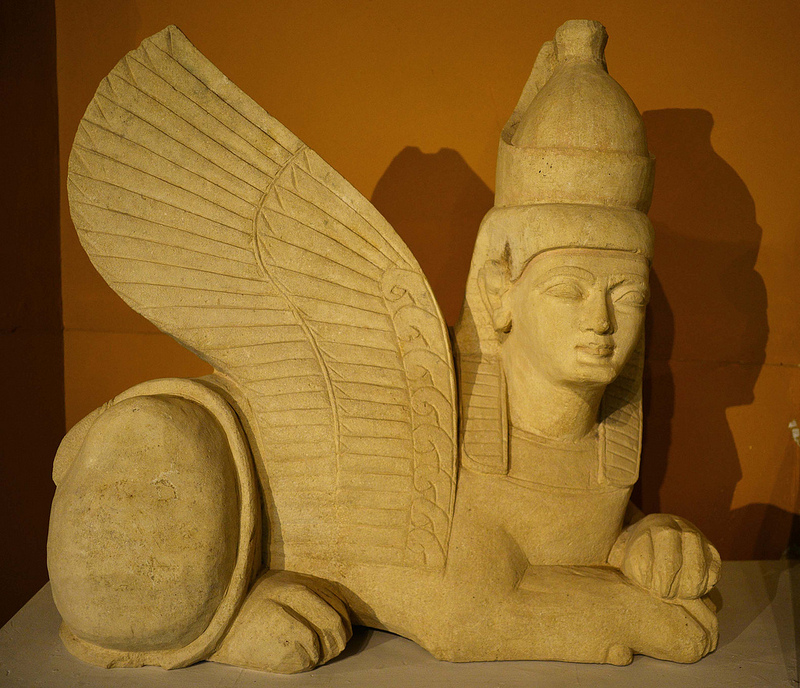
Tamassos is found 20 kilometers southwest of Nicosia, in the Politiko.
Being one of the seven ancient kingdoms of Cyprus, it dates back to the 8th century BC and was “named” by the first inhabitants who came from the regions of Anatolia. In the Sanskrit dictionary the word “Temes” means mineral.
The most impressive monuments of Tamassos are the two burial sphinxes of the 6th century BC, found next to an archaic cemetery with underground graves (royal tombs of Tamassos), 4 lions exhibited at the Archaeological Museum of Cyprus and the sanctuary temple of Aphrodite.
Find Tamassos
Archaeological Park Kato Paphos

Archaeological park of Kato Paphos is the ultimate destination for friends of archaeology which is very close to Paphos Castle and in the heart of the tourist area. It is an enormous area where there are many cultural sights and monuments from prehistoric times to the Middle Ages (although most of them date back to the Roman period).
Kato Paphos Archaeological Park is a pole of attraction for thousands of visitors every year and one of the most visited and important archaeological sites in Cyprus.
Proof of its importance, is the inclusion in the 1980 UNESCO World Heritage List, as a living part of Cyprus history.
The monuments of enormous archaeological importance are found either in open space, in buildings or under sheds. In the park, you can see the famous mosaics of Paphos found in the Roman villas of Dionysus House, Theseus House, Orpheus House and House of the Century, where scenes from Greek mythology are depicted on them.
The Agora, the Asklepion of Paphos, the Ancient Odeon of Paphos, the Fort of Forty Colonies, the Walls, the Lighthouse, the Tubalos and the emblematic Tombs of the Kings are included in the park. Next to the park are the remains of Vasiliki Panayia Limeniotissa, which also belong to the area.
Find Archaeological park of Kato Paphos
Sanctuary of Apollo Hylate

Located 8 kilometers east of Episkopi in Limassol and 4 kilometers west of Kourion, the sanctuary was one of the three most important sanctuaries on the island of Aphrodite and a place of worship of Apollo as a god of forests (hence the “Hylates” recorded by the Hellenistic years and the 3rd century BC).
This large building complex consists of the enclosure, the two entrances, the palestra, the baths, the circular monument, the central courtyard and the main temple of Apollo.
Find Sanctuary of Apollo Hylate
Ancient Idalion

It is located in Dali in the Nicosia district and was founded in the 12th century BC, with the ruins of that city forming an archaeological site more famous for the Inscription of the Dhali, a finding that proved to be the most democratic kingdom and one of the first to cut its own currency.
Idalion is a large fortified building complex that probably served as a palace or administrative center of the area.
It was considered as the largest ever found on the island, with a triple olive mill unique to its kind in the eastern Mediterranean region.
Find Ancient Idalion
Prehistoric Settlement of Lemba
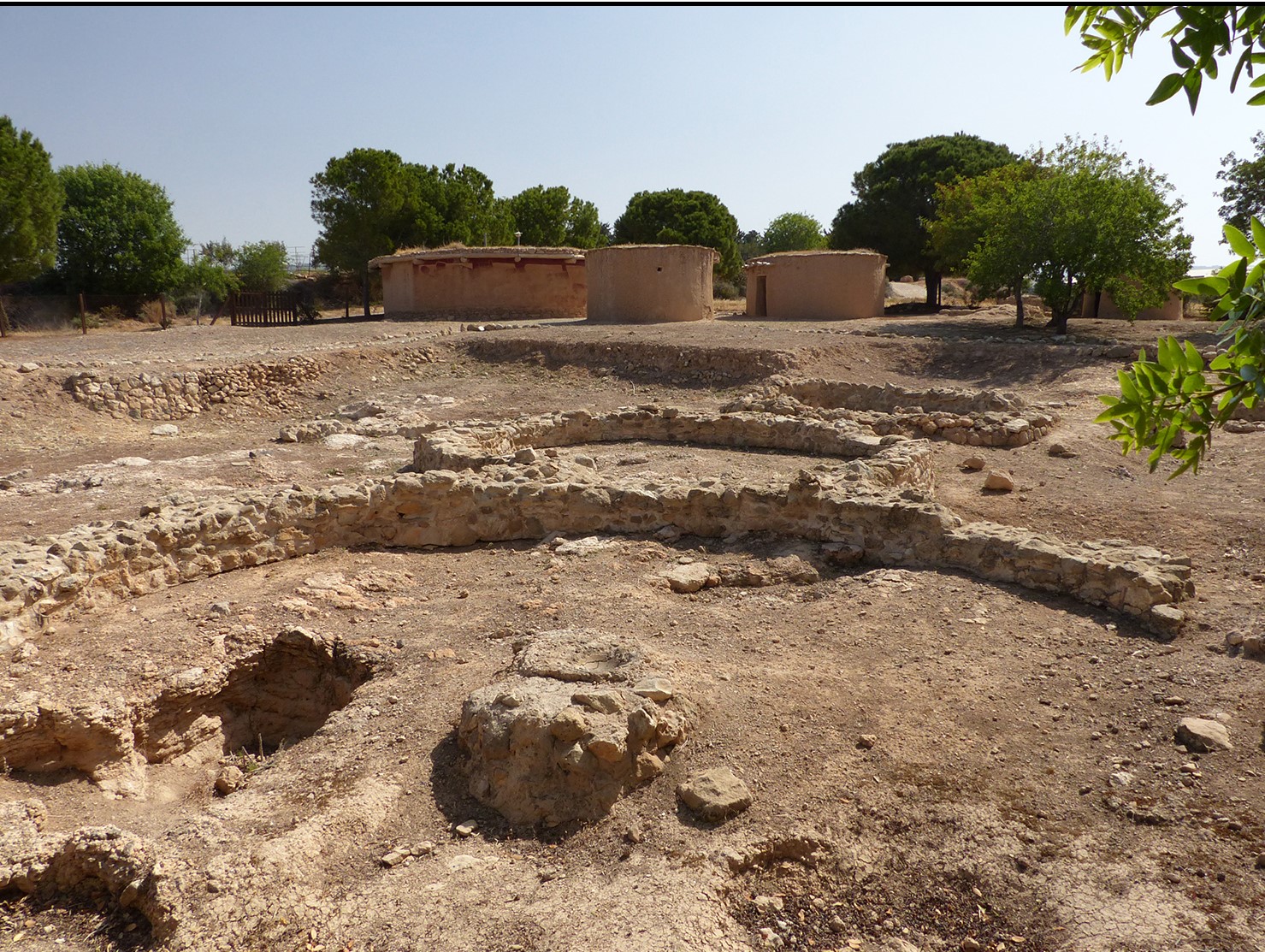
It is located just outside Lemba village in Paphos, and about 6 kilometers from the city of Paphos and is a great settlement of the Late Chalcolithic Age (3500-2400 BC).
The prehistoric settlement of Lemba was restored by the scientists, using the same materials and the same building methods used at that time.
The replicas of the seven houses were built in this way to highlight the conditions of the period and the way of life of its inhabitants.
Find Prehistoric Settlement of Lemba
Kolossi Medieval Castle
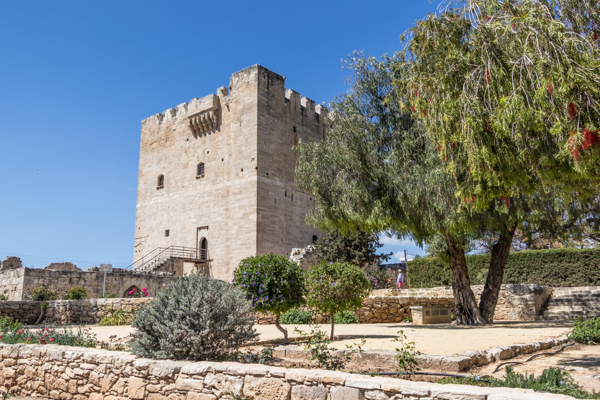
The 800 year old castle of Kolossi is built with stones and its walls are 1.5 meters thick.
It was built purely for defensive purposes and its image has nothing to do with the image of other European castles.
The fort tower offered unobstructed views of the countryside and its symmetrical structure provided broader angles for the detection of potential enemy armies’ attacks. The knights who built it gave priority to strategy and not to architectural beauty.
At the time, this was necessary in Cyprus in order to prevent hostile attempts to conquer the island, which lasted more than a millennium. Due to the strategic location of the island in the Mediterranean, the ancient Greeks, the Romans, the Byzantines and the Ottomans tried to conquer it.
It is also believed that Richard the Lionheart tasted the oldest wine in the world at his wedding in the Kolossi Castle. This wine was very sweet nectar and, as the legend says, Richard proclaimed it “wine of kings and king of wines”.
Commandaria, as it is called, still exists today, making it the oldest produced wine in the world, while it has been patented by the EU, as a product of a controlled designation of origin. The wine, whose production is documented in Cyprus since 800 BC, has been named after La Grande Commanderie, the military headquarters of the Templars and the Knights of John, two famous battalions of knights who held the island for hundreds of years during the Crusades from their base.
Kato Paphos Castle
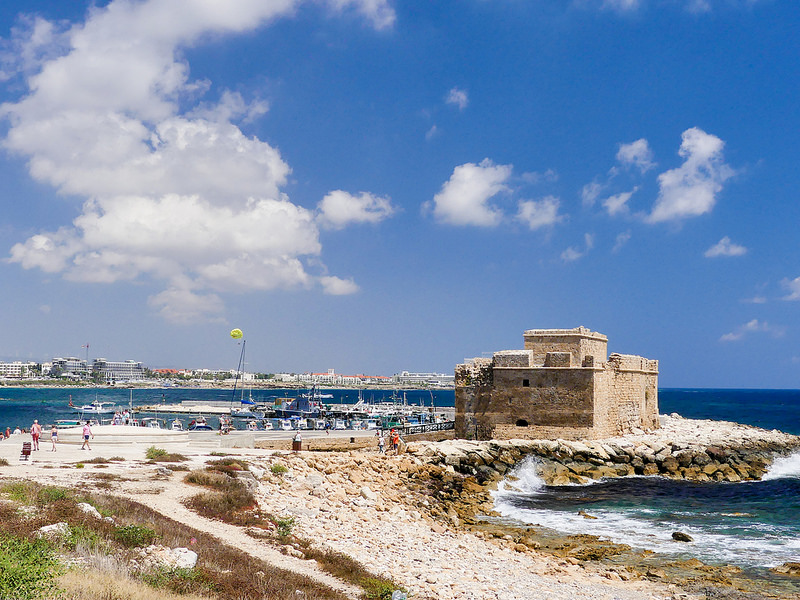
The castle of Paphos is built in the harbor of the city and was built during the Byzantine era, while the sole purpose of protecting the city.
The castle was destroyed by a great earthquake in 1222 and was repaired by the Luizitans during the 13th century.
Furthermore, according the history of the city, the castle was destroyed by the Venetians and rebuilt by the Turks, who added new fortifications.
Over the years, it has been used as a fortress, as a prison, even as a salt store by the British. Archaeological excavations are carried out from time to time.
Find Kato Paphos Castle
Famagusta Gate

Gate of Famagusta was the most important gate of the time, and it was leading to the port of Famagusta.
It was also known as the Juliana Gate, in honor of architect Julio Savorniano, who designed the city walls in the 16th century.
During the Ottoman domination period, Famagusta gate was allowed to be crossed by the Ottomans on horseback, but Cypriots and foreigners could only cross it on foot.
Today the gate is used as a venue for events, concerts etc. by the Municipality of Nicosia.
Find Famagusta Gate
Tzielefos Medieval Bridge

The bridge of Tzielefos is located at an altitude of 440m in the Paphos forest, 6 kilometers from the village of Agios Nikolaos. It is the largest medieval stone bridge in Cyprus and is built on the River Diarizos.
The bridge’s arch is shaped as a pine and is built from bricks. At the ends of the arch, there are well crafted stones in excellent condition, as well as on the top of the bridge where it is also its most sensitive spot. The base of the pavement is built entirely from river stones.
In the entrance of the bridge there is a waiting area from both ends. This is a proof that in the Middle Ages there was a lot of traffic activity, which is why the bridge has been the main axis connecting Paphos with the other provinces.
Find Tzielefos Medieval Bridge
Limassol Medieval Castle
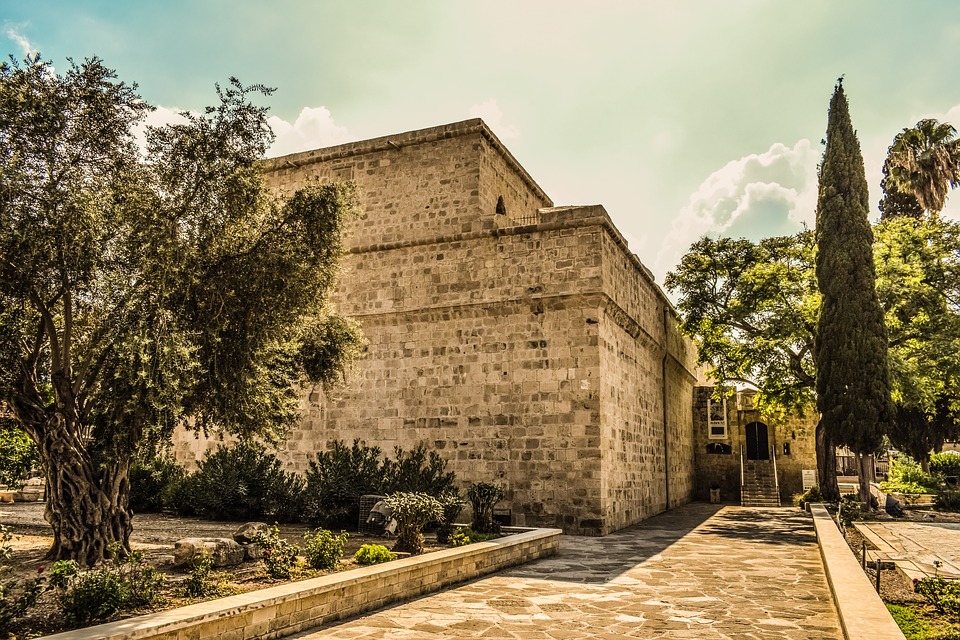
The Limassol Castle is, according to the tradition, the place where King Richard the Lionheart married Verengaria of Navarra and she was crowned Queen of England in 1191.
It is noteworthy that is still the only Royal Marriage of England to have been held outside of the Westminster Abbey. This is one of the main reasons why Queen of England demanded to visit the castle during her visit in 1992.
The fortification walls are of great archaeological interest and there is some speculation that the walls were pieces of a much larger castle.
The exact date of construction of the castle is still unknown.
According to Etienne de Lusignan, it was built in 1193 by the founder of the Lusignan dynasty, Guy de Lusignan, but the first official mention of the castle dates back to 1228.
Over the years, the castle suffered from attacks by various invasions and from earthquakes in 1567 and 1568. Finally, in 1590, the Ottomans rebuilt the castle in its original form.
Larnaca Medieval Castle
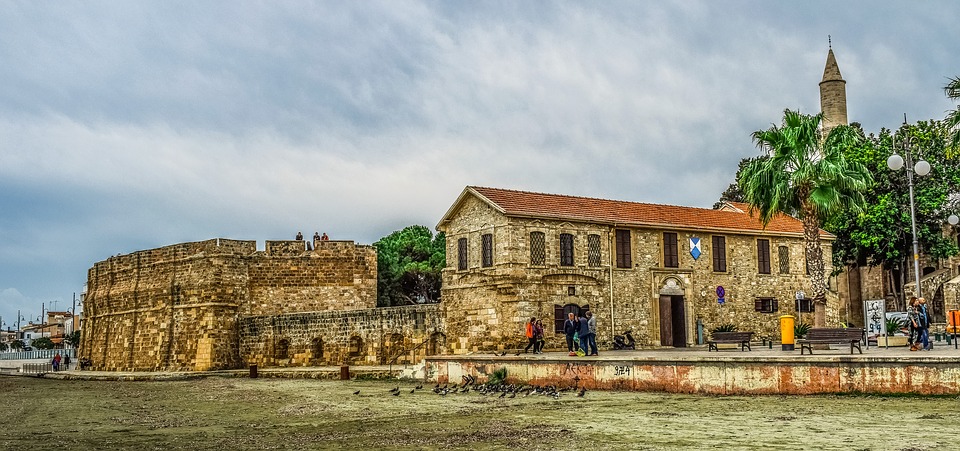
The Medieval Castle of Larnaca was built by Lusignan King Jacob A’ [1382-1398].
Its original form when it was built in the 14th century is unknown. Its construction on the beach was made for the protection of the anchorage of Alykes, which became the most important port of the kingdom after Famagusta’s imprisonment by the Genoese in 1373.
According to historical testimonies, at the same site there was a fortress, built by the Byzantines in the 11th century during the time of the Komnene Emperors.

